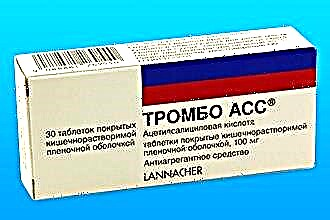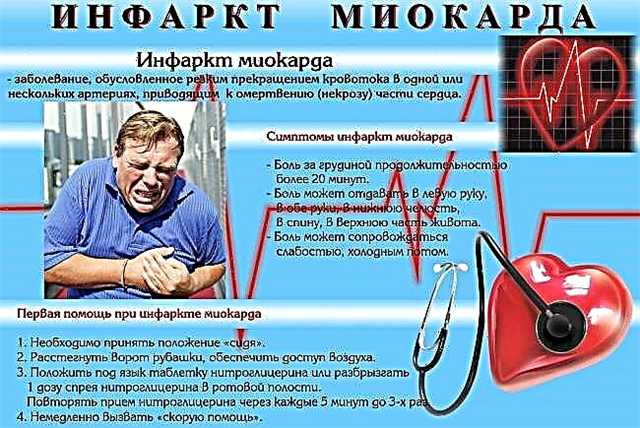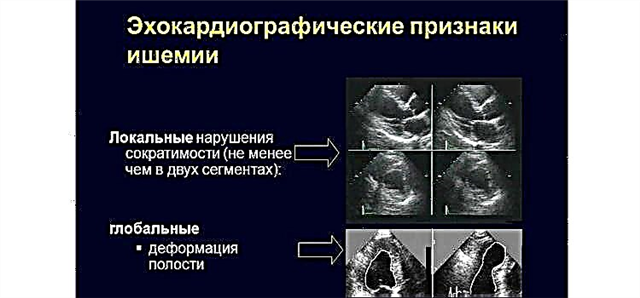In our time, the most common pathologies are diseases of the cardiovascular system, in addition, from them and the highest mortality. The first reason for the development of myocardial infarction and ischemic stroke is the closure of the vessel by a thrombus. To prevent the formation of blood clots, acetylsalicylic acid preparations are used. On the pharmaceutical market, one of the most common are Cardiomagnet and Thrombo ACC, each of which strives to be the best. What is the difference between them and what are the advantages of each of them?
What are the differences between the drugs?
 Both remedies are shown to patients who suffer from such pathologies:
Both remedies are shown to patients who suffer from such pathologies:
- angina pectoris and a decrease in the risk of myocardial infarction;
- prevention of relapse after a heart attack;
- violations of blood flow in the vessels of the brain, including in ischemic stroke;
- prevention of thrombosis due to surgical intervention on the vessels, including conditions after coronary artery bypass grafting;
- prevention of transient ischemic attacks;
- prevention of the development of thrombophlebitis with varicose veins.
Cardiomagnet and Thrombo ACC have the same active ingredient - acetylsalicylic acid (ASA), which has anti-inflammatory, antipyretic and antiplatelet effects. It is the latter property that made it possible for these drugs to be widely used in the treatment and prevention of cardiovascular diseases.
Cardiomagnet differs from Thrombo ACC in the composition of additional substrates. In the first, in addition to acetylsalicylic acid, such auxiliary substances are included: corn starch, magnesium stearate, cellulose, talc and propylene glycol. It also contains magnesium hydroxide, which has a protective effect on the gastric mucosa and weakens the irritating effect of ASA, adsorbs hydrochloric acid, and has an enveloping property.
The composition of Trombo ACC as auxiliary substances includes lactose monohydrate, cellulose, colloidal anhydrous silicon dioxide, starch, talc, triacetin and a dispersion of methacrylate copolymer. Thanks to these components, a drug shell is formed, which can only dissolve in the intestine under conditions of predominance of an alkaline medium, without affecting the stomach, which reduces the risk of the damaging effect of its mucous membrane.
Another difference between drugs is dosage. Cardiomagnet is available in tablets, which can contain 75 or 150 mg of acetylsalicylic acid. Thrombotic ACC is produced in quantities of 50 and 100 mg of active ingredient. The minimum effective dose of ASA for the prevention of cardiovascular pathologies is different for certain groups of patients with a high cardiovascular risk are shown in the table:
| Patient groups | The minimum effective dose, mg |
|---|---|
| History of transient ischemic attack or ischemic stroke | 50 |
| Men at high risk of cardiovascular events | 75 |
| Hypertonic disease | 75 |
| Stable and unstable angina | 75 |
| Carotid artery stenosis | 75 |
| Polycythemia vera | 100 |
| Acute ischemic myocardial infarction or acute ischemic stroke | 160 |
Depending on the specific pathology, a different dose of acetylsalicylic acid is needed. Thrombotic ACC or Cardiomagnet have the required amount of active ingredient for each case. It is important to remember that the drug with an enteric coating must not be broken, so as not to damage it and not to provoke the onset of the action of the reagent in the stomach.
Another rather important criterion for choosing a drug for a patient is price. The cost of Thrombo ACC is almost two times less than that of Cardiomagnyl. But it's worth remembering that you need to focus not only on the price, but also on the safety of the appointment recommended by the doctor. After all, it is the specialist, therapist or cardiologist who determines the need for treatment, the dosage and the type of drug.
Which one to give preference to?
Before deciding on the choice of a drug, it is necessary to study the contraindications to the appointment. They are the same for both medicines:
 hypersensitivity to salicylates or any component of the drug;
hypersensitivity to salicylates or any component of the drug;- chronic course of bronchial asthma, which is caused by the intake of acetylsalicylic acid or a history of non-steroidal anti-inflammatory drugs;
- peptic ulcer in the acute stage;
- bleeding and hematological pathologies (hemorrhagic diathesis, hemophilia, thrombocytopenia);
- severe failure of the liver and kidneys;
- simultaneous reception with methotrexate.
With an incorrectly selected form of a pharmaceutical preparation or its dose, as well as individual sensitivity and characteristics of the body, the following side effects may appear, as a result of which it is necessary to cancel or replace the drug:
- from the gastrointestinal tract: heartburn, belching, soreness in the epigastric region, inflammatory and erosive-ulcerative lesions, which can lead to bleeding and perforation;
- increased risk of bleeding from postoperative wounds, the appearance of hematomas;
- hypersensitivity reactions: itching, skin redness, edema, bronchospasm;
- transient liver failure;
- hypoglycemia.
Features of appointment
In order to decide whether to take Cardiomagnet or Thrombotic ACC, you need to consult with your doctor. Only the doctor indicates the need and dosage of medications. In some cases, self-medication with blood thinners can be hazardous to health and have serious side effects.
For example, treatment with acetylsalicylic acid is prohibited during pregnancy, especially in the first and third trimester. There is a risk of giving birth to a child with developmental defects (splitting of the hard and soft palate, violation of the structure of the heart), the appearance of intracranial hemorrhages. Also, taking these drugs can harm the mother: prolonged pregnancy, weakness in labor, lengthening the bleeding time. If there is a need for therapy, then the dose of the drug should be as small as possible, and the course of treatment should be shorter.
 In the treatment of varicose veins, an emphasis is placed on reducing blood viscosity, the possibility of thrombus formation and improving microcirculation. For this, the use of only Thromboass and Cardiomagnyl is not enough, since they have only a disaggregant property. The treatment regimen includes Actovegin (improves blood flow and metabolic processes), Curantil (prevents blood clots), as well as drugs that strengthen the vascular wall.
In the treatment of varicose veins, an emphasis is placed on reducing blood viscosity, the possibility of thrombus formation and improving microcirculation. For this, the use of only Thromboass and Cardiomagnyl is not enough, since they have only a disaggregant property. The treatment regimen includes Actovegin (improves blood flow and metabolic processes), Curantil (prevents blood clots), as well as drugs that strengthen the vascular wall.
Before making a choice in favor of this or that drug, the doctor carefully collects the patient's history, conducts a physical examination (palpation, auscultation), and also studies laboratory blood parameters. Some experts argue that magnesium hydroxide, which is part of Cardiomagnyl, does not function well enough as an antacid, and they prefer an enteric coating, like Thromboass. Other researchers notice a mild antiplatelet effect of low-dose drugs that dissolve in the intestine.
Which of the two drugs is right for a particular patient is up to the doctor to decide. When complaints of dyspeptic disorders, abdominal pain, exacerbation of erosive processes of the gastrointestinal tract appear, it is necessary to stop taking medication or replace it (if it is impossible to interrupt antiplatelet therapy), supplementing the treatment with antacids.
Conclusions
Acetylsalicylic acid preparations, namely Thromboass and Cardiomagnyl, must be included in the treatment of patients with high cardiac risk. Despite the possibility of side reactions, the expected positive effect is much higher. In addition, the drugs are affordable and easy to use.

 hypersensitivity to salicylates or any component of the drug;
hypersensitivity to salicylates or any component of the drug;

